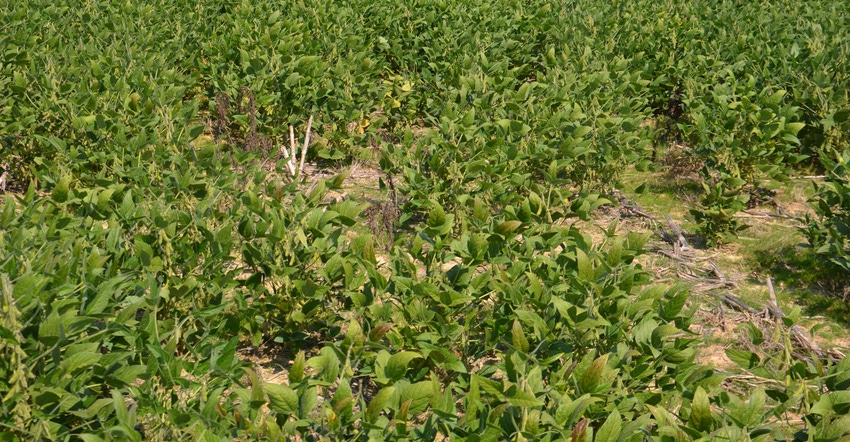
Suppose you plant 140,000 soybean seeds per acre, but by June 1, it’s obvious some areas are thin. What are your options if sizable areas range from 50,000 to 125,000 plants per acre in the same field?
Betsy Bower, a certified crop adviser and agronomist with Ceres Solutions, based near Terre Haute, Ind., realizes your first reaction likely would be filling in the thin areas.
“In 2019, it was easy to determine which areas to fill in, as they likely had no beans,” she says. She notes that Purdue University research indicates there is no yield advantage to filling in thin stands higher than 75,000 plants per acre.
In fact, a Purdue study found that planting various seeding rates into an existing stand of 66,000 plants per acre produced no higher yield than simply leaving the 66,000-plant stand and doing nothing. The worst choice was tilling up the stand late and replanting 200,000 seeds per acre. That treatment yielded considerably less than leaving the stand alone. The study is nearly two decades old, but Bower believes the results still apply.
“If you can designate the 50,000 or less stand areas, filling in by planting more seed would likely be good — even if harvesting is a pain — as you can still likely get 100% of yield in the 125,000 population areas,” she says. “Totally replanting a field could result in more overall field yield loss due to a later planting date.”
That’s exactly what the Purdue study indicated. If you choose to fill in, use a midseason variety, if you can get one, because it has more overall yield potential when planted late versus a full-season variety, Bower says.
Trade-offs
Jesse Grogan, also a CCA and a regional agronomy manager with AgReliant Genetics, based near Lafayette, Ind., believes that plant counts near 100,000 per acre usually are enough for economic yield. Areas with low stands in the 60,000 to 70,000 range can be filled in with a row planter. However, he advises that replanting or filling in areas with low stands should be done with caution.
Why? For one reason, planting rigs, either planters or drills, can cause injury to established plant stands. Harming existing plants with a head start on the season can be counterproductive.
Stan Miles, an Indiana CCA and an agronomist with A&L Great Lakes Labs, Fort Wayne, Ind., takes a long lens view of the thin stand problem. “Research data shows that a final uniform soybean stand of 50,000 plants per acre has the potential to achieve 90% of maximum yield, and a delayed planting date of June 20 can potentially reach 80% of maximum potential,” he says. “This will drop rapidly as July approaches.”
The bottom line is that replanting and obtaining a good stand, which isn’t guaranteed, could result in less yield, not more, if it’s very late in the season.
“Most often, soybean stands are lost due to crusting and ponding, but it’s important to rule out other factors such as herbicide damage, poor seed germination, insect damage or seedling diseases,” Miles says. “If these problems aren’t properly diagnosed, replanting may also be unsuccessful. Replant decisions often hit us at a time when our to-do list is long, and it needs to be prioritized with other time-sensitive tasks.”
About the Author(s)
You May Also Like




